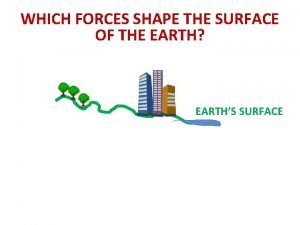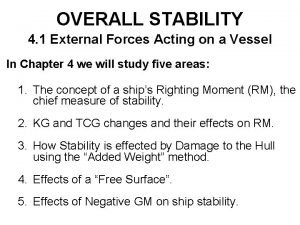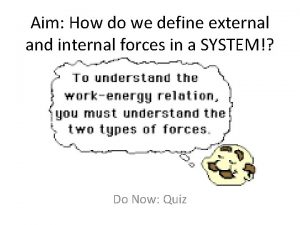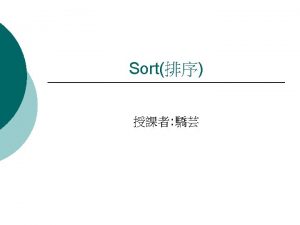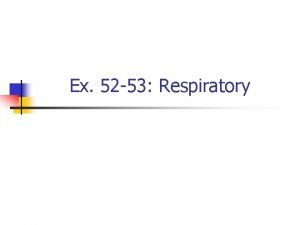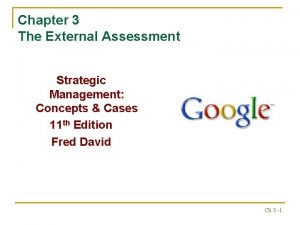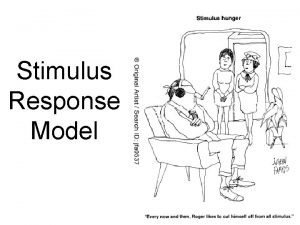Internal vs External Forces Internal Forces External Forces














- Slides: 14

Internal vs. External Forces Internal Forces External Forces • Fgrav • Fspring • • • Fapp Ffrict Fair Ftens Fnorm

Internal Forces • When work is done by an internal force total mechanical energy (KE & PE) is conserved. – The sum of KE and PE remains Constant

External Forces • When work is done by an external force total mechanical energy (KE & PE) is changed. • If work is positive the object gains energy – Force and displacement are in the same direction • If work is negative the object loses energy – Force and displacement are in the opposite direction • Energy gain/loss can be in the form of PE, KE, or Both • “Non conservative forces” • Only if external Force has a vertical component can it contribute to PE change

Relating Work to Energy • Total mechanical energy plus work done by external forces is equal to the final total mechanical energy. TMEi + Wext = TMEf or KEi + PEi + Wext = Kef + PEf

Example Problem

Example Problem

Example Problem

A 1000 -kg car traveling with a speed of 25 m/s skids to a stop. The car experiences an 8000 N force of friction. Determine the stopping distance of the car.

At the end of the Shock Wave roller coaster ride, the 6000 -kg train of cars (includes passengers) is slowed from a speed of 20 m/s to a speed of 5 m/s over a distance of 20 meters. Determine the braking force required to slow the train of cars by this amount.

A shopping cart full of groceries is sitting at the top of a 2. 0 -m hill. The cart begins to roll until it hits a stump at the bottom of the hill. Upon impact, a 0. 25 -kg can of peaches flies horizontally out of the shopping cart and hits a parked car with an average force of 500 N. How deep a dent is made in the car (i. e. , over what distance does the 500 N force act upon the can of peaches before bringing it to a stop)?

Stopping Distance • Force that does work over a distance to remove mechanical energy from an object. TMEi + Wext = TMEf Then stopping is KEi + Wext= 0 J Then. 5*m*v 2 + F*d*cos 180= 0 J Therefore. 5*m*v 2 = F*d And v 2 α d stopping distance depends on velocity squared If velocity doubles, distance quadruples

Mechanical Energy Conserved • If only internal forces are doing work then there is no change in TME, therefore: KEi + PEi = KEf + Pef • PE increases KE decreases (& vice versa) • PE is transformed into KE (& vice versa) • TME is conserved

Pendulum Motion • What forces act upon a pendulum that is swinging? (hint one is internal the other is external) • Is the external force doing work? • Is energy conserved? • What happens to PE and KE as height decreases? • Where do you expect the pendulum to have the greatest PE? (A, B, or C) • Where do you expect the pendulum to have the greatest KE? (A, B, or C) WARNING: PLEASE IGNORE AIR RESISTANCE & FRICTION

TME Conserved Systems • Roller Coasters • Ski Jumpers
 Structural inertia resistance to change
Structural inertia resistance to change How do internal and external forces shape the earth
How do internal and external forces shape the earth External force example
External force example External-external trips
External-external trips Glickman's concept
Glickman's concept External forces that shape the earth
External forces that shape the earth External forces on the transverse statical stability
External forces on the transverse statical stability External forces
External forces Internal and external conflict
Internal and external conflict Internal and external sort
Internal and external sort Epiglottis
Epiglottis Internal and external assessment in strategic management
Internal and external assessment in strategic management The external assessment in strategic management
The external assessment in strategic management Flow chart of stimulus response
Flow chart of stimulus response Seed germination
Seed germination





